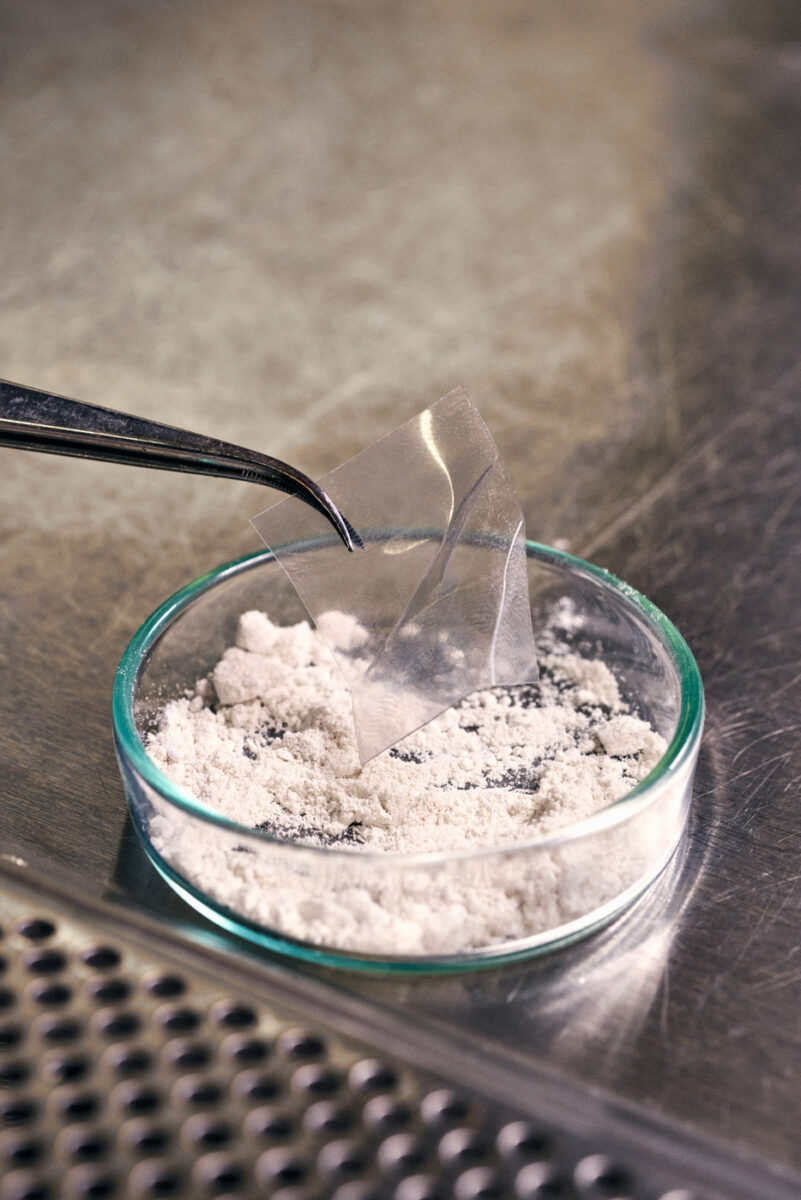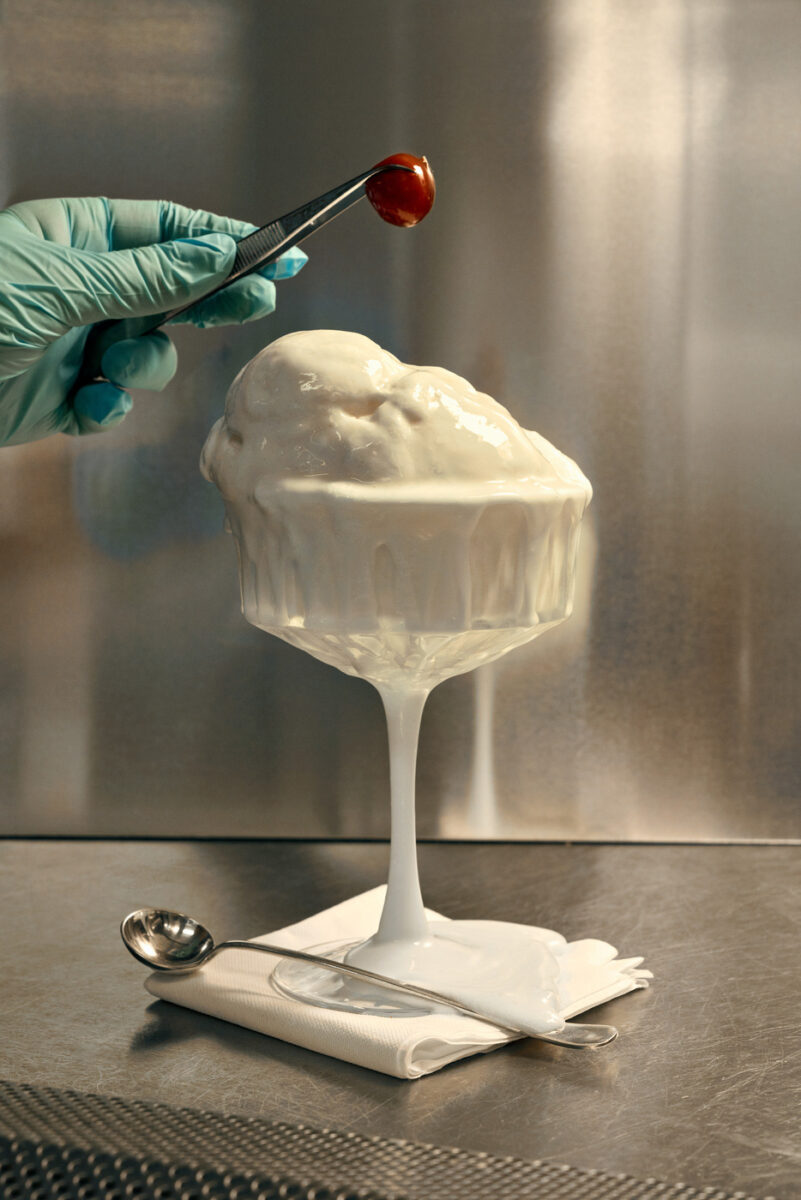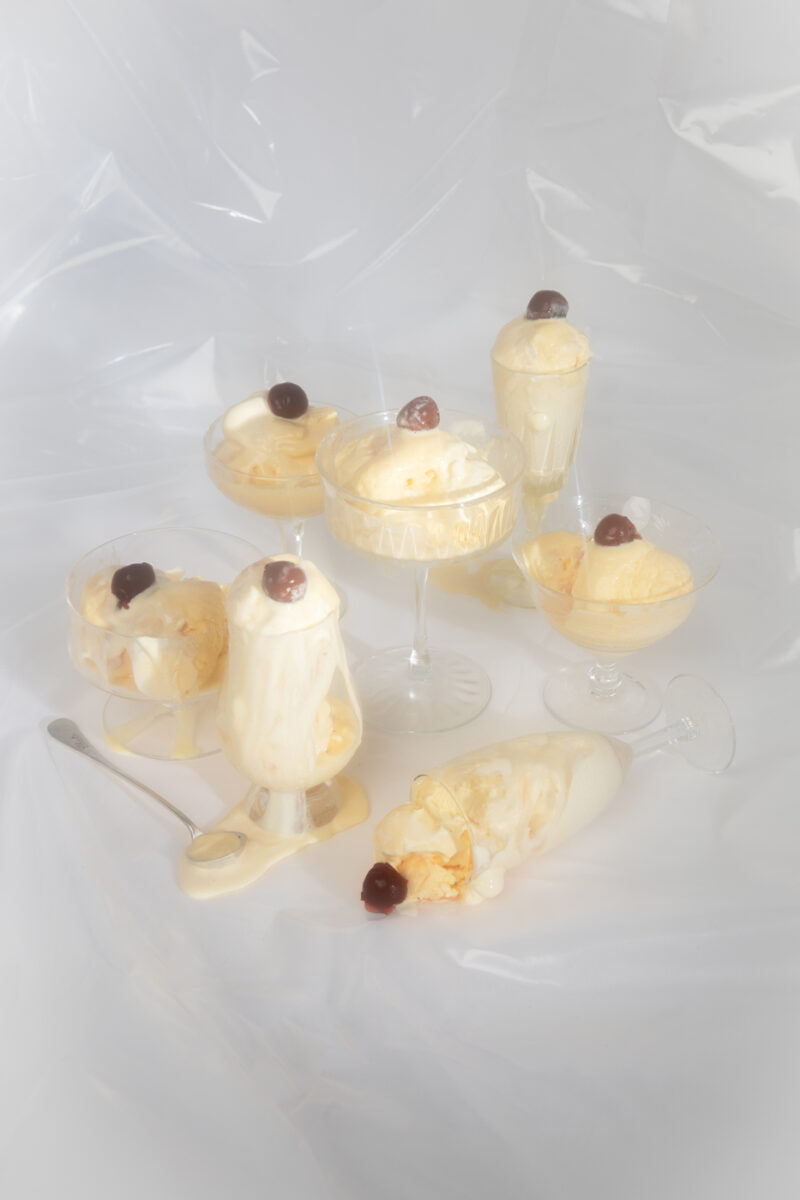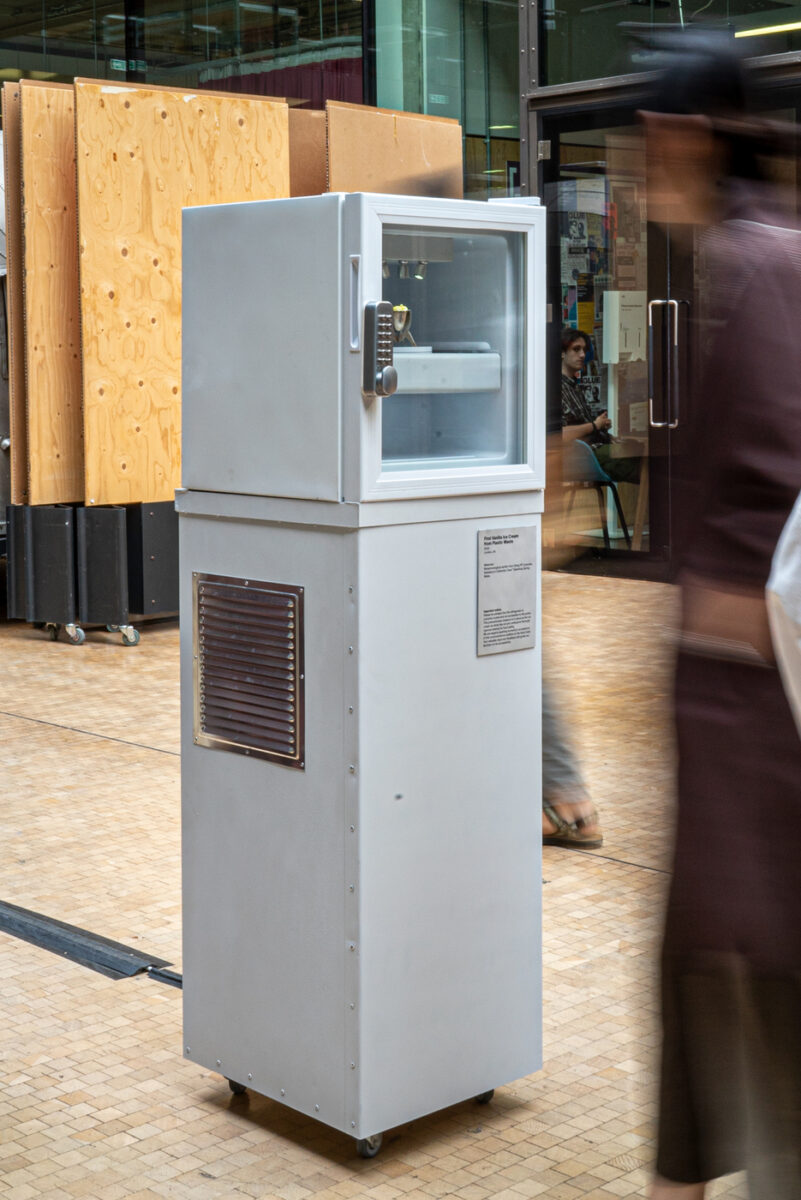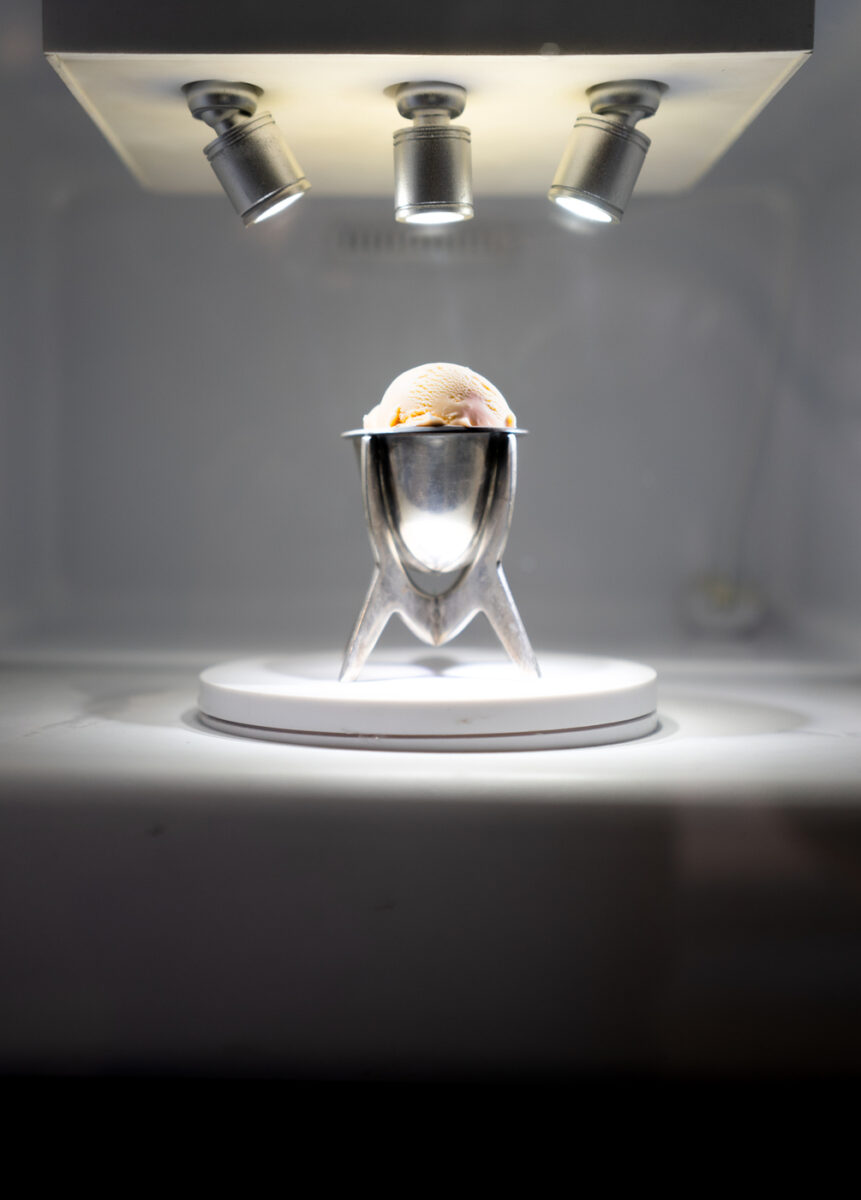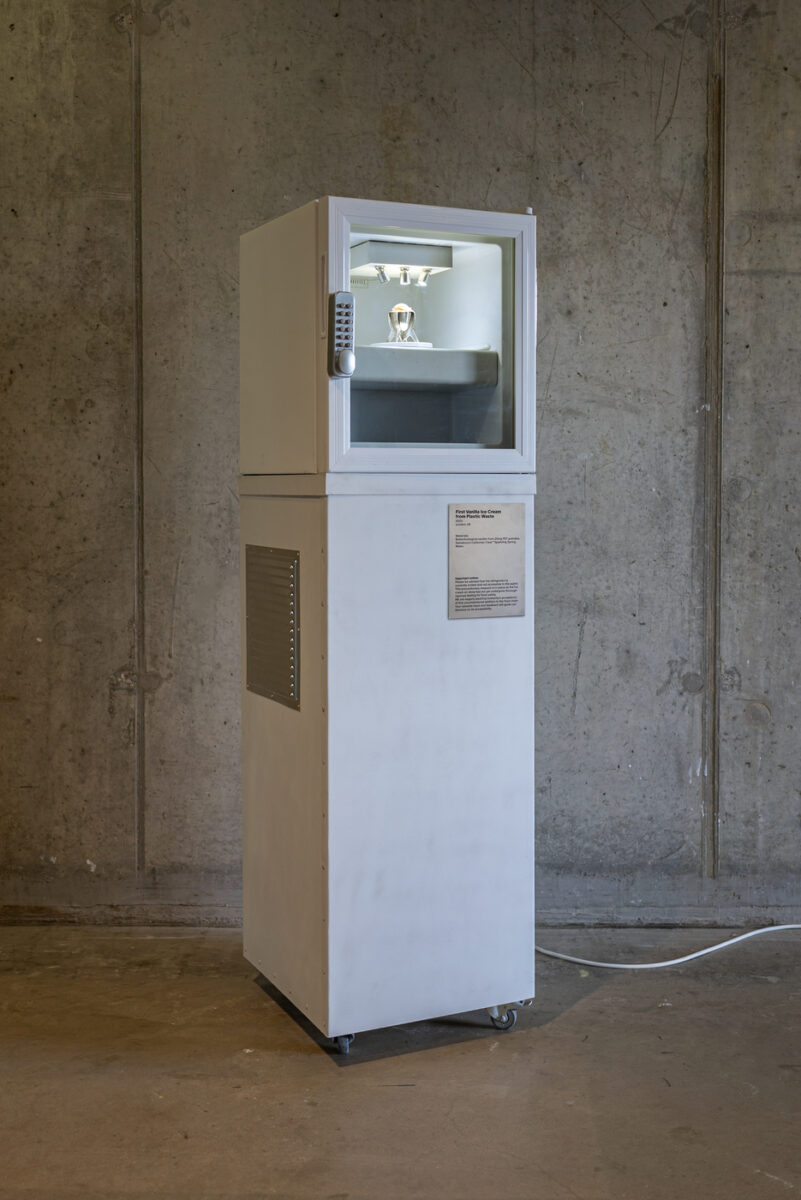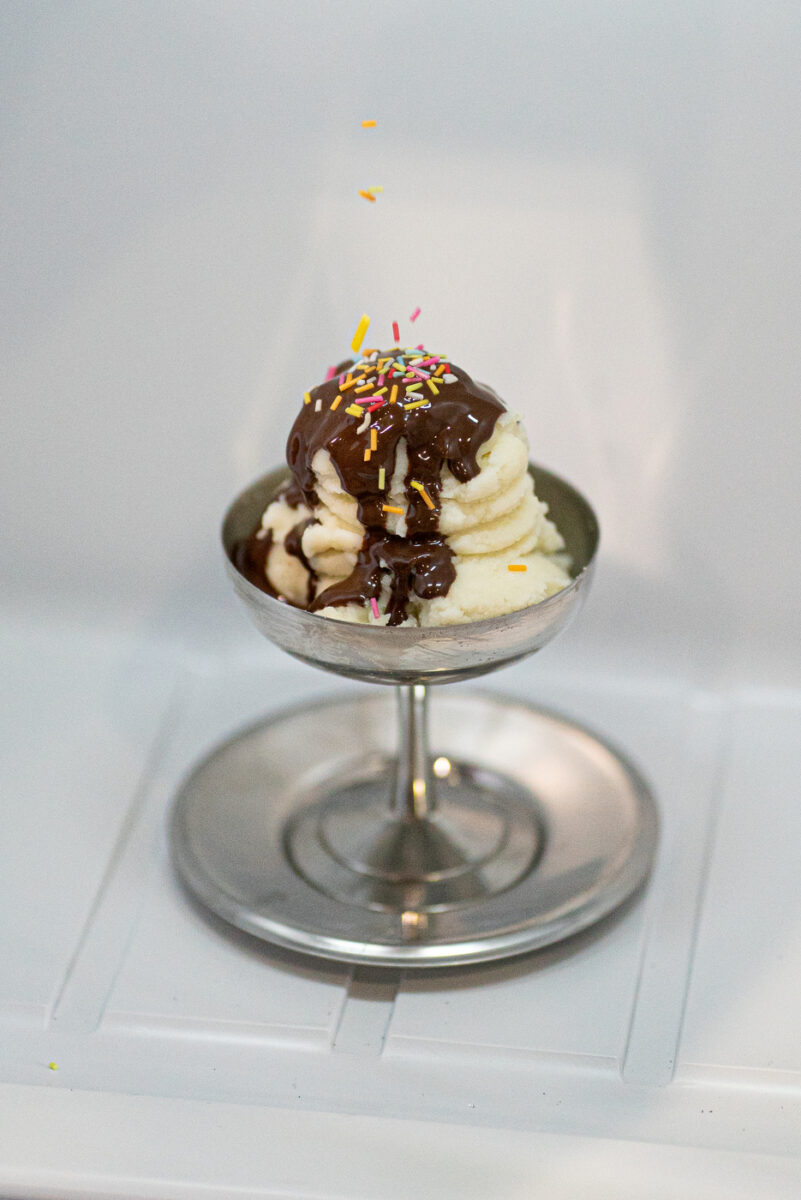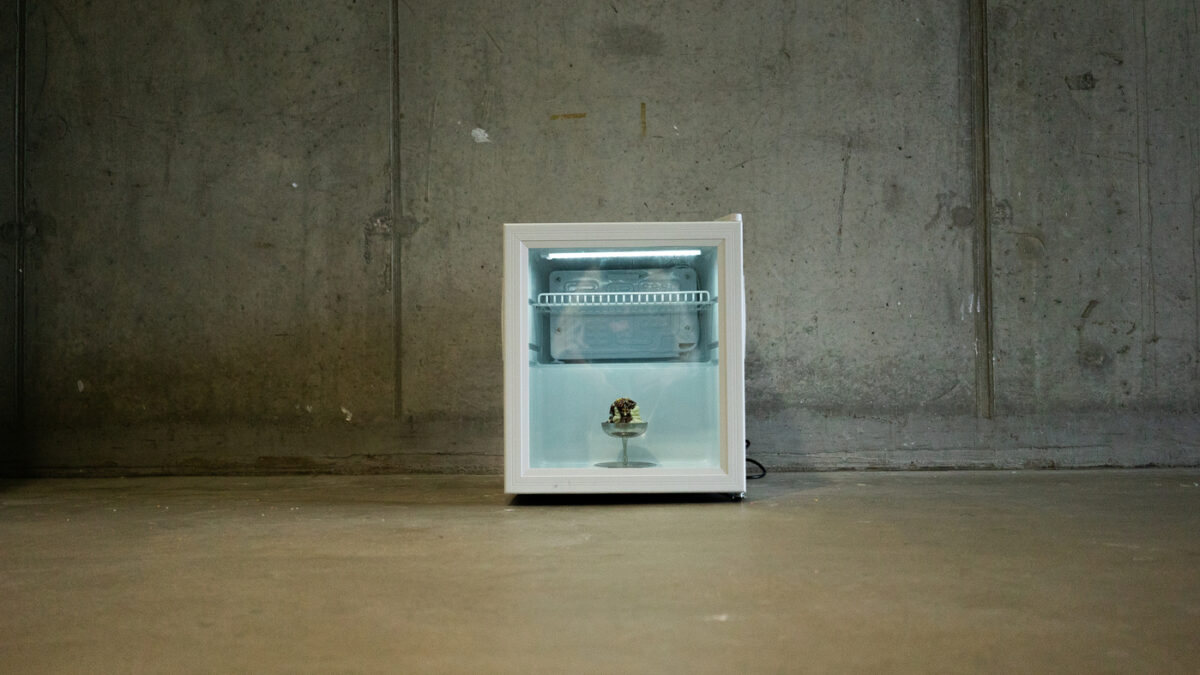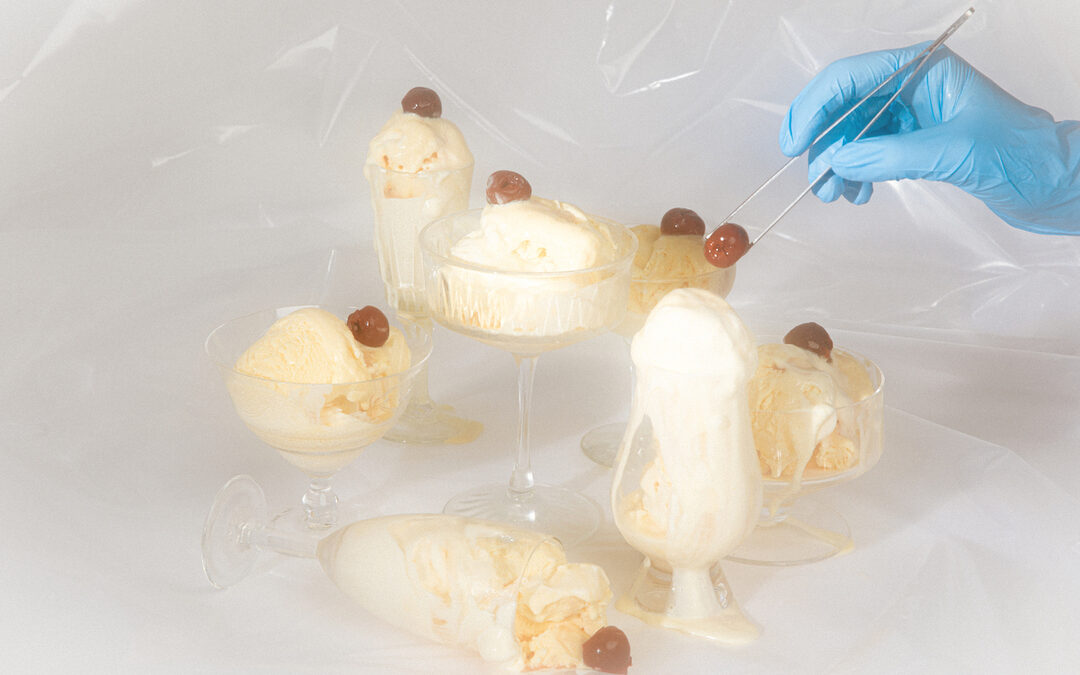
GUILTY FLAVOURS, for a taste of… plastic!
Born and raised in Italy and now based in London, Eleonora Ortolani is a multidisciplinary designer with a strong interest in material experimentation. With a background in visual communication, Eleonora’s curiosity and passion for science led her to explore new areas of design such as the future of food. For the designer, food is “a powerful reflection of society as a whole” and this thought of hers is reflected in the Guilty Flavours project. (Cover image, Eleonora Ortolani)
Fascinated by the intersection of food, science and design, Eleonora has collaborated with leading scientists, such as Johanna Sadler – research scientist at the University of Edinburgh – and established chefs and food experts. With Guilty Flavours, the designer has tried to tackle the problem of plastic waste and its disposal not only with new “potentially edible molecules”, but with a provocation that aims to question our way of dealing with the problem.
c
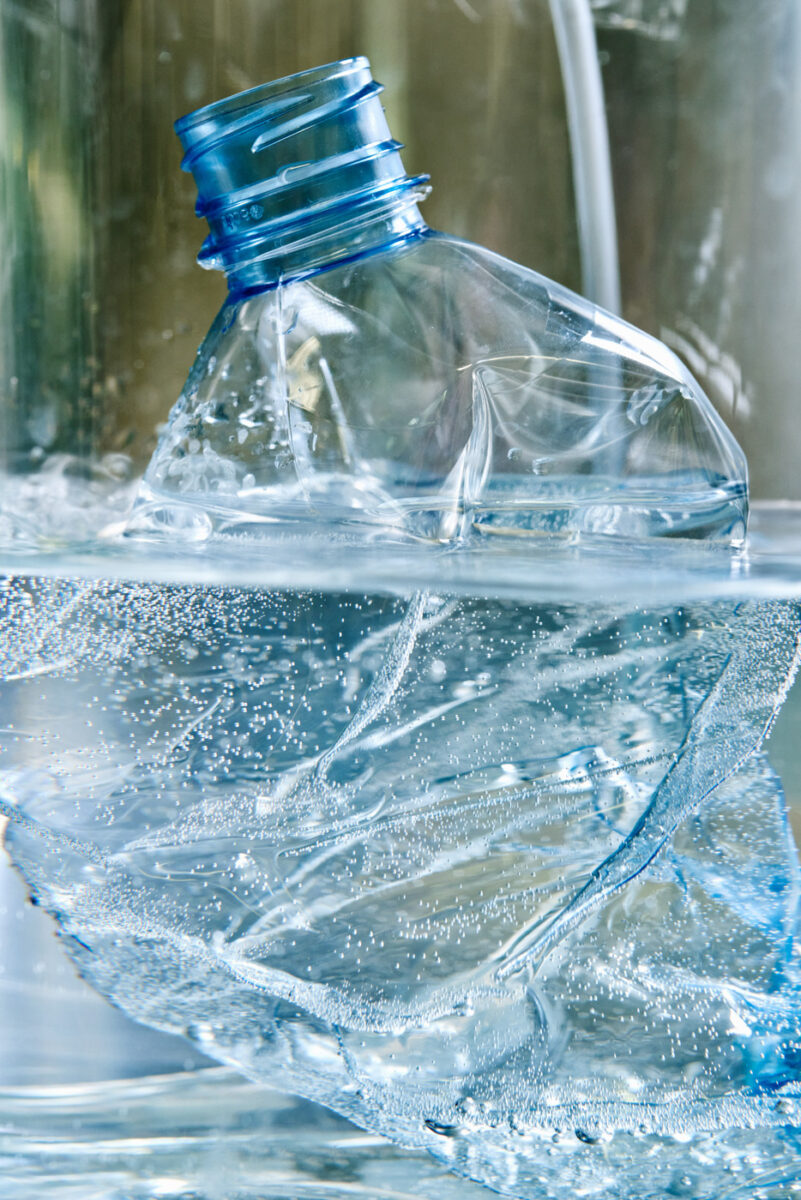
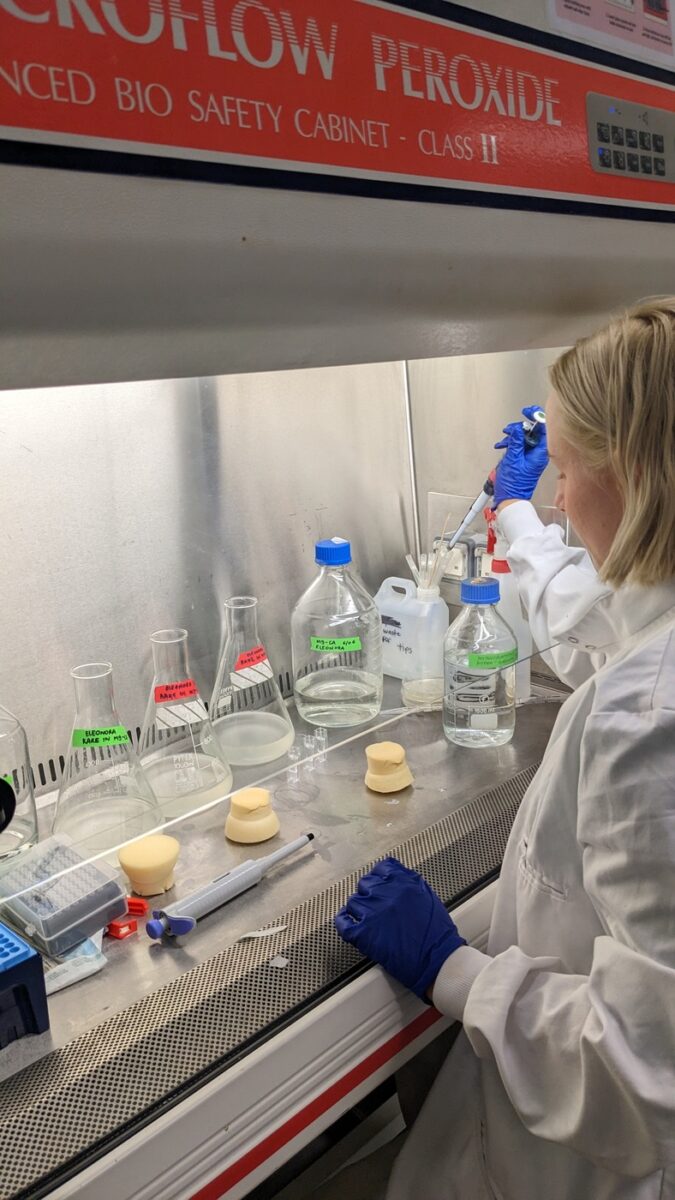
c
Guilty Flavours is a radical proposal that wants to use us and our bodies as machines to eliminate plastic forever by eating it – other organisms have already evolved to digest it. New biochemical processes created by digestive enzymes could allow humans to safely consume plastic in the future. Ideonella Sakaiensis is a bacterium that was discovered in 2016 in a sample of sediment taken from a plastic bottle recycling station in Sakai, Japan. These bacteria produce two enzymes which break PET down to its constituent molecules and plays an important role in the depolymerization process of PET plastic explored in this project. Starting from the vanilla flavor, Eleonora’s research explores how we can exploit this process to create completely edible molecules.
“The project – says Eleonora – makes us wonder if we, as human beings, are ready to compromise our eating habits to contribute to a more resilient and harmonious world. The display of ice cream in a locked freezer symbolizes its inaccessibility to the public, highlighting the time-consuming nature of evaluating the plastic-derived ingredient: indeed, despite its chemical similarity to vanillin, both natural or synthetic, the testing process is still long as it is considered a completely new ingredient (and a new technology). This underlines the urgency of finding innovative solutions and implementing rapid change in our society to address pressing environmental issues.”
Guilty Flavours is undoubtedly a provocative project, but the designer was also able to create a food that, before being tasted, makes you think: it’s not just about “eating plastic” but going against a taboo, that of tackling the problem with a different mentality, primarily questioning our biases. What if we really had to find such solutions?
For more information on the project and the research, visit Eleonora Ortolani website and follow her on Instagram!
c
